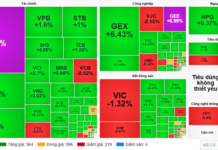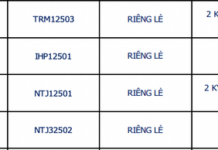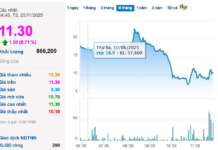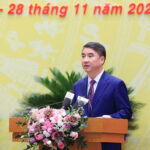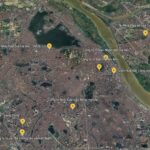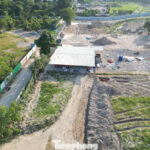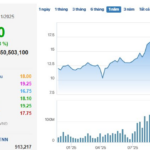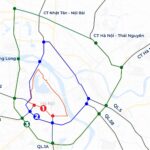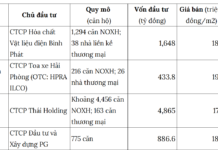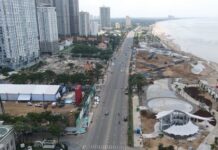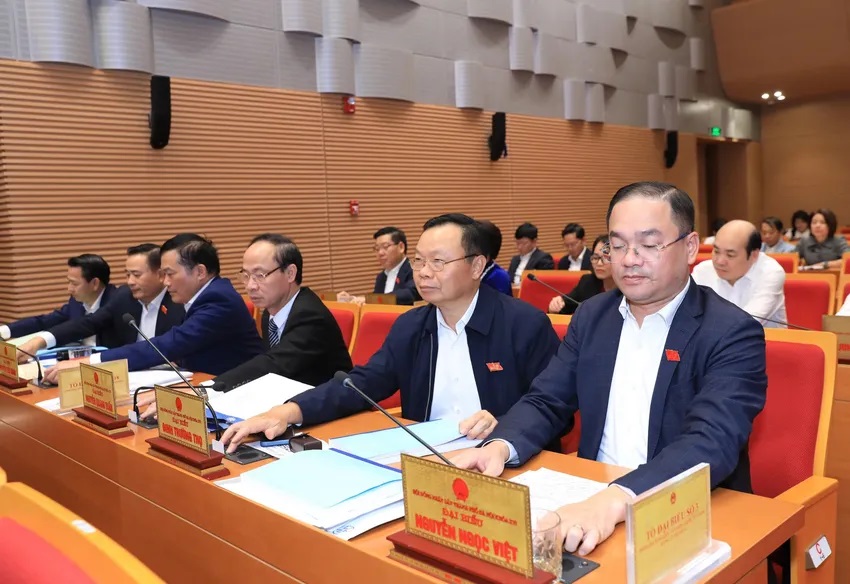
On the afternoon of November 26, with a majority of delegates voting in favor, the Hanoi People’s Council adopted a resolution establishing the new land price list, effective from January 1, 2026.
|
On the afternoon of November 26, with a 100% approval rate from attending delegates, the Hanoi People’s Council passed a resolution on the new land price list, effective from the beginning of 2026. Accordingly, land prices in the capital are divided into 17 zones following administrative unit rearrangements, rather than by districts and wards as previously.
Zone 1 (wards within Ring Road 1) has the highest prices, including Tây Hồ, Ngọc Hà, Ba Đình, Giảng Võ, Ô Chợ Dừa, Hoàn Kiếm, Văn Miếu – Quốc Tử Giám, Cửa Nam, and Hai Bà Trưng.
Within this zone, the highest land price exceeds 702 million VND per square meter for plots adjacent to major roads (Position 1) along streets such as Bà Triệu (from Hàng Khay to Trần Hưng Đạo), Đinh Tiên Hoàng, and Hai Bà Trưng (from Lê Thánh Tông to Quán Sứ).
This rate also applies to streets like Hàng Đào, Hàng Khay, Hàng Ngang, Lê Thái Tổ, Lý Thường Kiệt, Nhà Thờ, and Trần Hưng Đạo (from Trần Thánh Tông to Lê Duẩn). Compared to the current price list, Hanoi’s highest land price has increased by 2%.
This 2% increase is also applied across Zone 2 (wards within Ring Road 2), Zone 3 (from Ring Road 2 to Ring Road 3), Zone 4 and 5 (outside Ring Road 3 on the right bank of the Red River, excluding Chương Mỹ, Sơn Tây, and Tùng Thiện), and Zone 6 (wards within the Red River – Đuống River – Ring Road 3 boundary).
According to the resolution, in special cases, land plots with at least four sides adjacent to roads listed in the price table will have an adjustment factor (K factor) of 1.3 in the highest-priced areas. Plots with one to three adjacent sides will have a K factor ranging from 1.1 to 1.25.

Some suburban areas of Hanoi saw the highest land price increases, reaching up to 26%.
|
The new land prices primarily saw significant fluctuations in certain suburban areas. Notably, land prices in Zone 9 (comprising 7 communes: Liên Minh, Ô Diên, Đan Phượng, Hoài Đức, Dương Hòa, Đông Sơn, and An Khánh) increased by up to 26%. The average land price here is approximately 30.4 million VND per square meter, compared to 26.8 million VND in the current list.
The highest new price in this group is along National Highway 32, from the border of Xuân Phương Ward to the intersection leading to the Kim Chung Di Trạch urban area, at 64.7 million VND per square meter.
Following closely are Zone 7 (including 9 communes: Tiến Thắng, Yên Lãng, Quang Minh, Mê Linh, Phúc Thịnh, Thư Lâm, Đông Anh, Vĩnh Thanh, and Thiên Lộc) and Zone 10 (comprising 12 communes: Đại Thanh, Thanh Trì, Ngọc Hồi, Nam Phù, Bình Minh, Tam Hưng, Thường Tín, Hồng Vân, Thanh Oai, Dân Hòa, Thượng Phúc, and Chương Dương), both with a 25% increase.
For agricultural land, the highest rate of 290,000 VND per square meter remains unchanged from the current list in central wards and areas near Ring Road 3 (Zones 1-6).
Communes in the northern part of the capital (Tiến Thắng, Yên Lãng, Quang Minh, Mê Linh) and southwestern areas like Thường Tín, Hồng Vân, Thanh Oai, Dân Hòa, and Thượng Phúc saw a 24% increase. Specifically, land for rice, annual crops, and aquaculture is priced at 192,000 VND per square meter, while land for perennial crops is 262,000 VND per square meter. These rates also apply to suburban communes in western Hanoi, such as Đan Phượng, Hoài Đức, An Khánh, and Phú Xuyên.
The remaining areas in Hoài Đức, Đan Phượng, Đông Anh, Gia Lâm, and former Thanh Trì districts have agricultural land prices equivalent to pre-administrative rearrangement levels. Here, land for perennial crops is priced at 270,000 VND per square meter, and land for rice, annual crops, and aquaculture is 231,000 VND per square meter.
The adjusted land price list serves as the basis for calculating compensation, determining land prices for resettled individuals, and computing land use tax and personal income tax from land use rights transfers. It also adjusts fees and charges related to land use, transfers, and administrative procedures.
For citizens, in land transactions where the agreed price is lower than the published list, land management authorities may request a review of the transaction’s legality. Even if the transaction is legal, individuals must pay taxes and fees based on the minimum price in the land price list.
– 08:50 27/11/2025
Unprecedented Budget Surplus: Hanoi Records Highest Revenue Collection in History
The Hanoi People’s Committee has announced that the city’s budget revenue for this year is estimated to exceed 640 trillion VND, reaching 124.9% of the planned target. Notably, revenue from land use fees alone accounts for 89 trillion VND. This marks the first time Hanoi’s budget collection has surpassed the 600 trillion VND milestone.
Prime Relocation Spots: Mapping Companies Moving Out of Hanoi’s City Center, Anticipated Land Use Beyond Residential High-Rises
According to the proposal, the first phase will involve the relocation of 66 manufacturing facilities, agency headquarters, units, and hospitals. This includes 51 industrial production facilities (comprising 9 facilities listed in Resolution 17/NQ-HĐND dated July 8, 2022, by the City People’s Council and 42 new facilities) and 15 agency and unit headquarters.
The Transformation of the Depot Area on the Nam Thang Long – Tran Hung Dao Metro Line After One Month of Construction
In recent days, the Xuân Đỉnh depot area, part of the Nam Thăng Long – Trần Hưng Đạo metro line project in Hanoi, has seen vibrant development. The entire 11.3-hectare construction site for the depot in Xuân Đỉnh ward has been fully prepared. This marks Hanoi’s first depot built under the Transit-Oriented Development (TOD) model, integrating smart transportation solutions.
Motorcycle Ban in Hanoi: Detailed Map and Timings for Gasoline-Powered Vehicles
Hanoi proposes banning gasoline-powered motorbikes from entering low-emission zones based on specific timeframes or areas, as outlined in the detailed low-emission zone plan.

